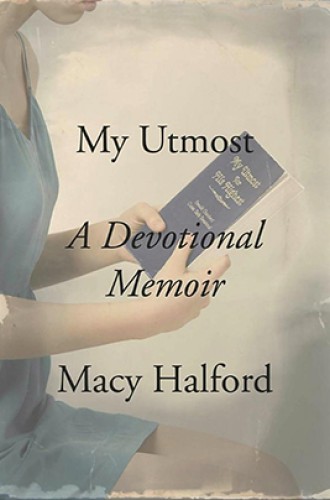Macy Halford’s two worlds
A New Yorker staffer investigates the evangelical book that will not let her go.
Books about books carry more than a smidgen of risk for authors and publishers. Historians of the book, literary scholars, memoirists of the reading life: all face the titanic task of writing about texts that they cannot assume that we, their readers, have read. And publishers must convince us to take an arduous metacognitive leap—reading about reading—as we either read about a book we haven’t read or reach for our credit cards a second time.
I chose the former option when reading Macy Halford’s spiritual memoir, which stitches an evangelical childhood and less-defined young adulthood onto the life and thought of Oswald Chambers, the Scottish author of the classic devotional text My Utmost for His Highest. I considered reading Chambers’s book first, but then realized that I would better represent the interests of Halford’s readers if I stuck with my cluelessness. Halford published her book with Alfred A. Knopf, known for its elegantly literary but decidedly unevangelical works. The Knopf “taste public,” as sociologist Herbert Gans calls people who share preferences for cultural products like books, artwork, and music, isn’t the same taste public that bought millions of copies of Utmost. Halford could not assume that her readers would have any familiarity with the book at the center of her book, let alone any knowledge of the evangelical Christian cosmos in which it has flourished.
Next to the Bible, Chambers’s devotional was the central text of Halford’s 1980s childhood in Texas, as it was for millions of other evangelical Christians in America. The book is entwined with memories of watching her grandmother and mother read it. At first Halford considered the little blue book old-fashioned, “as fusty and tedious as everything else my grandmother liked—the book equivalent of boiled vegetables, potted pansies, needlepoint, PBS, and Chanel No. 5.” But reading Chambers became a daily ritual for her through her youth and into her years at Barnard and her time as a copy editor for the New Yorker.






